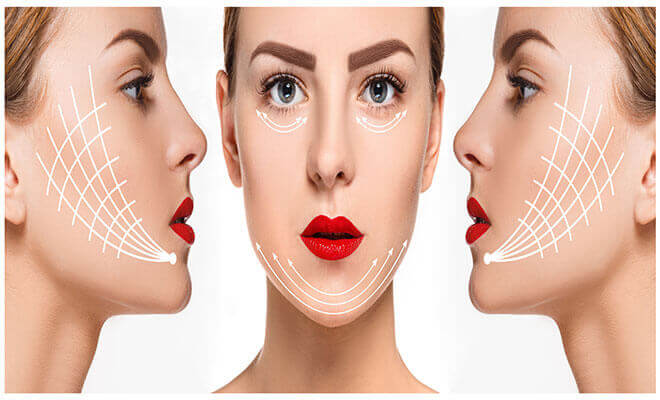A thread lift is a unique, innovative, and minimally invasive procedure used by surgeons to tighten and lift sagging skin tissues.
In connection to the question of anti-aging solutions.
what are the best anti-aging treatments today, thread lifts are now gaining popularity as an alternative to the conventional facelifts because of the advantages that include no surgical cuts, less scarring, reduced costs, rapid recovery, and safety? It is also more effective than instant facelift creams.
However, like any other procedure, it still does come with many possible thread lift complications and risks.
To know more about the healing process and the damages, it might cause, continue reading this article.
What Is Thread Lift Treatment?
A thread lift or feather lift surgery is a cosmetic surgery procedure that involves inserting threads or very fine surgical sutures into the soft facial tissues just underneath the skin to add support and lift sagging parts.
It is arguably the best nonsurgical wrinkle treatment according to some experts.
Regarding the question of “do thread lifts work?”, the procedure does work but cannot be expected to give the same results as a full facelift or a standard rhytidectomy[1].
It is only limited to a more subtle lift, and people opt for it because the procedure and the thread lift recovery time are relatively shorter.
Moreover, high rates of risks, complications, and other thread lift facelift problems have been reported and studied.
In a 2009 study on the Outcomes in Threadlift for Facial Rejuvenation, the complications and the rates at which they occur in patients were assessed.
It was reported that out of the 72 thread lift procedures performed by a surgeon over two years, 31% required revisional surgery after an average of 8.7 months, 11% ended up having the threads removed, and 42% underwent a secondary procedure after an average of 8.4 months.
All of these rates are high compared to a normal rhytidectomy and may ultimately overcome the procedure’s theoretical, short-lived, and subtle advantages.
What Is The Difference Between Thread Lift And Face Lift?
While thread lifts and facelifts are similar in that they both offer solutions on how to reduce signs of aging, there are several distinct differences between the two when it comes to the procedure, results, and risks that you can use to decide whether you prefer a thread lift or facelift.
These include:
- A thread lift is more convenient and less invasive.
- The thread lift procedure is known as a lunchtime or weekend procedure because it requires a shorter period.
- Recovery period or downtime is shorter after a thread lift.
- In a thread lift, special surgical threads are placed under the skin to hold and reposition the facial tissues and skin in place. These clear threads leave almost no traces of surgery and are later dissolved and absorbed by the body. The results are almost immediate, and no skin is removed. On the other hand, a traditional facelift requires cutting of the facial skin, muscles, and fat tissues and repositioning them without adding any extra supporting structures. Excess skin is also often removed.
- Thread lifts limit certain disadvantages but also give limited facial alteration results.
What Are The Complications, Side Effects And Risks of Thread Lift Treatment?
When done improperly or by a non-experienced surgeon, the following PDO thread lift[2] complications, and side effects may be experienced:
- Bruising and swelling after thread lift
- Infection
- Asymmetry
- Puckering and Rippling
- Granuloma or Lumps After Thread Lift
- Thread loss
- Thread Breakage
- Sensory Modifications
- Scarring
While it is normal to experience some bruising following a thread lift, intense or prolonged bruises or swelling can be considered as one of the side effects or complications of thread lift.
Go back to your doctor for a follow-up if you are worried about these conditions not subsiding accordingly.
Infections are among the most common surgical complications that occur within one to six weeks after a procedure.
Primary signs of infection are redness, tenderness, and swelling around the suture area that may or may not is accompanied by a fever.
Most cases of infection can easily be treated with antibiotics.
This is not among the common side effects of thread lift but is always something to watch out for.
Sterilization of tools and the use of an aseptic technique can significantly reduce the risks of an infection.
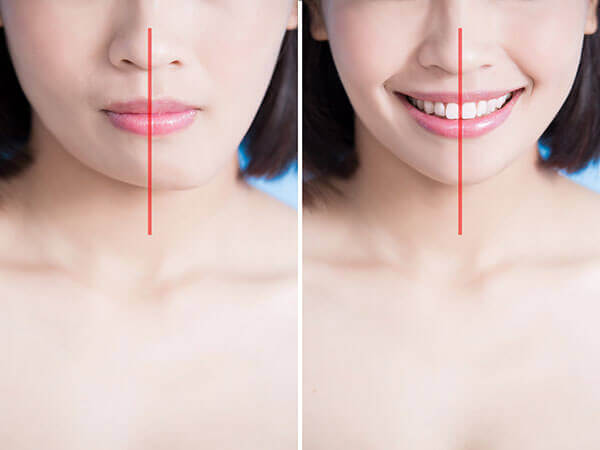
Asymmetry – Image/Courtesy
It is important to have an even lift and appearance on both sides of the face.
Asymmetry[3] or disfigurement can occur the thread breaks or is improperly positioned. So, it is important for the patient to inform the surgeon of any existing asymmetries post-procedure.
A patient is also encouraged to participate in correcting any asymmetry during the procedure through a mirror to avoid problems later on.
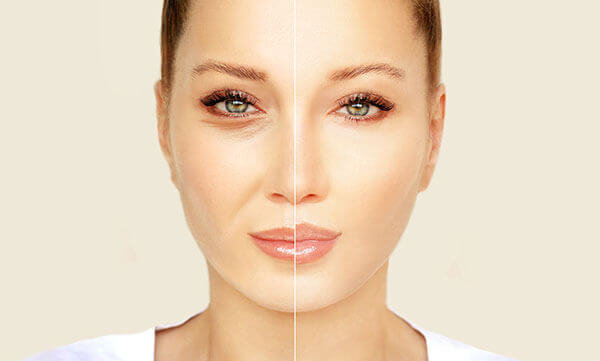
puckering and rippling – Image/Courtesy
When the thread is tightened unevenly or too much, the skin can ripple, leading to some visible folding of the skin.
If the thread is placed correctly, this problem will normally resolve itself in a few days.
Ruching or dimpling can also be caused by tissue swelling due to the placement of local anesthetic and edema.
When threads are placed too near to the surface, the incidence of granuloma formation or the development of granulated knots of tissues under the skin is increased.
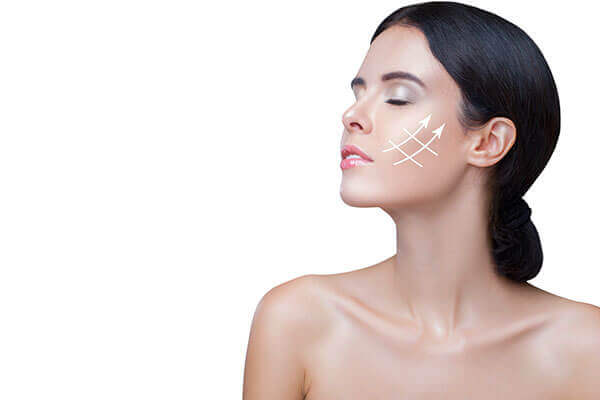
Thread Loss – Image/Courtesy
Upon cutting of the threads, it is essential for the surgeon to ensure that the ends will be tucked back into the skin.
When the thread protrudes, it poses an infection or granuloma risk, which can lead to patient distress.
Monofilament threads should be removed while barbed and cogged threads should be cut since they are very difficult to remove.
Thread lift risks also include the breaking of the threads. When a surgeon is inexperienced in placing barbs and cogs, thread breakage could be an issue during insertions tightening.
Some patients experience sensory changes or numbness in the affected area as other thread facelift side effects.
If this persists, mention this during your post-procedure follow-up.
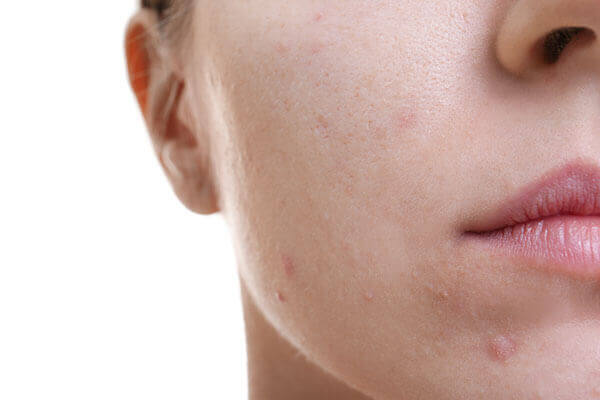
Scarring – Image/Courtesy
Generally, thread lifts do not cause scarring and are designed to keep scars hidden, if any.
However, it may still occur in patients who are prone to keloidal or hypertrophic scarring.
In any case, these thread lift cases are not probable, but you should always talk to your doctor first about these before pushing through with the procedure.
The best cosmetic surgeons will inform you of all of these beforehand and will ask a lot of questions about your specific conditions, medications, and expectations to avoid potential problems.
How Long is The Recovery After Thread Lift Surgery?
Right after a thread lift, your face could be bruised and swollen, but this should subside after a few days. Some pain or numbness can also be experienced.
- To reduce swelling, you may be advised to sleep or rest with your head elevated.
- You should have someone to drive you home after the surgery and help you out for the first day. You can also eat only soft foods for a week.
- You can resume your normal activities after three to seven days. Depending on the type of your job, you should also be able to go back to work at this time. After a week, bruises should be easily covered with makeup.
- As part of your thread lift aftercare, avoid rubbing, tugging, or contorting the face for the first three weeks. By nine months post-procedure, the threads will be dissolved and absorbed by the body via hydrolysis. Note, however, that the length of recovery varies from person to person due to different thread facelift before and after conditions.
Thread Face Lift: How Long Does It Last?
The tightening effects of the thread lift should remain for at least another 2 years with the help of collagen stimulation.
While it is a generally safe and minimally invasive procedure, there are still many possible thread lift complications.
To avoid these and to get the best possible results, choose a well-known surgeon who is experienced in thread lifting.
Also, research or ask your doctor about drug interactions with your current medications, potential conditions, allergies, sensitivities, and other concerns.
One of your responsibilities as a patient is to also know the complications and understand the limitations of this technique.
FAQ’s:
Que: How Much Do Thread Lifts Cost?
Ans: The average cost of a thread lift in the United States is $2,050.
Que: How long does it take to recover from a thread lift?
Ans: The recovery period for a PDO thread lift is approximately two weeks.
Que: Is There Any Complications or Side Effects To Thread Lift?
Ans: A thread lift is a low-risk treatment with little recovery time, although there are side effects and the possibility of complications.
It is not unusual to encounter the following symptoms following a thread lift:
- Bruising
- Swelling
- Bleeding
- Slight pain at the site of the injection
Que: What Are Pdo Thread Lift Complications?
Ans:Uncontrollable discomfort, thread extrusion, dimpling, sensory abnormalities, and foreign body responses are the most prevalent complications encountered. According to Kaminer et al., patients had postprocedural adverse effects such as edema, bruising, thread extrusion, and ear numbness.
Que: How Long Does a Thread Lift Last?
Ans: It is important to realize that, while no lifting treatment produces permanent results, facelift surgery often produces longer-lasting effects than a thread lift. Facelift surgical results can last up to a decade, although thread lifts typically last one to three years.
Que: Are threads better than Botox?
Ans: Yes, a thread lift will stimulate collagen whereas Botox will not.
Que: Can thread lifts get infected?
Ans: Yes, Infection is a common complication of thread lifting.
Related: 5 Best Anti Aging Solutions That Gives You Younger Looking Skin

 By Wendy Gould
By Wendy Gould
